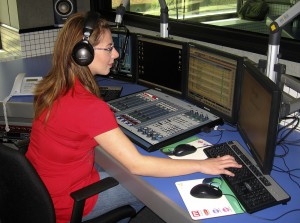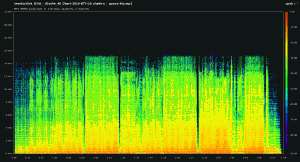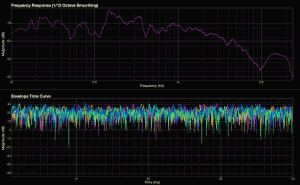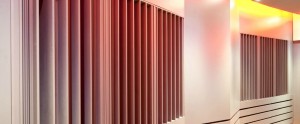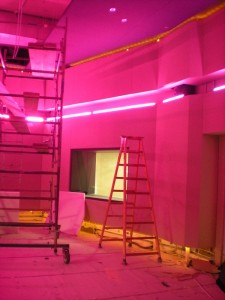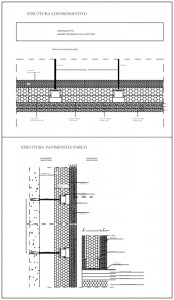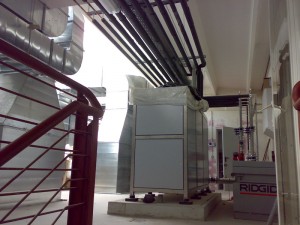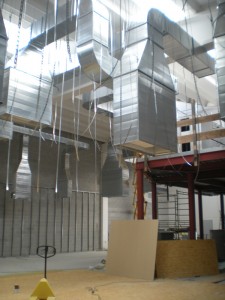Radio and TV Broadcasting
Open allReson8 has developed a vast range of inexpensive but extremely efficient solutions particularly suitable for radio and television, where acoustic engineering integrates with the architecture and technology of studios.
Reson8 has developed a working model capable of providing “turnkey” delivery. After a careful assessment of the specific case, considering the needs and the budget available, it designs and installs the insulation and internal acoustic treatment and the air-conditioning, electrical, data, audio and video systems.
Reson8 supplies a complete solution to guarantee efficiency and reliability, and enable customers to be certain of the total costs and design and realisation times in advance.
Acoustic treatment of a control room
A room’s acoustic defects are the main source of error when playing back a mixed track. The importance of good acoustics is often underestimated, because of the mistaken impression that investing in instrumentation (hardware and software) is sufficient for broadcasting purposes. Specular reflection, excessive reverberation and uncontrolled standing waves inside the room may generate misleading timbral effects.
One of the most common errors is the belief that equalisation is enough to cover the room’s acoustic defects. Equalisation is only partially able to compensate the spectral defects that the shape of the room creates in the music, and the operation depends closely on the position from which the measurement is made.
The acoustic design of a control room includes the provision of a neutral listening area, which is a space of suitable size where the music can be heard flat, meaning without reflections or standing waves and with the right reverb time.
Soundproofed structure
When it comes to the soundproofing of a radio and/or television studio, the various rooms (control room, recording room and speaker room) must be insulated from each other and from the outside. Various parts of the structure (walls, floors and ceilings) and access points (doors and windows, air-conditioning systems and electrical systems and wiring) are all involved in this process.
Low frequency soundproofing is the most critical aspects, and therefore an external structure capable of containing these frequencies (non environment double shell), preferably in brick or stone, must be built. Dry sand filling may be used in the cavities (including those of the double ceilings) as an amorphous material. The internal acoustic treatment modules (Helmotz or diaphragm resonators) are sometimes installed between this perimeter structure and a second, inner structure, with specially angled or diaphragm walls.
The inner structure may be in multilayer plasterboard, including composite types, taking special care over joints and other points requiring filling, together with the use of elastic mounting joints in the anchor points. The floor must be mechanically decoupled: several layers of thin wood sheets on an interlocking lath framework resting on a mattress comprise one possible system, with the cavities filled with mineral fibre, for example. In more expensive solutions, a cast concrete floor is supported by precalibrated suspensions, with a double layer lath framework providing the structure of the internal walls.
Air-conditioning system
Very often, soundproofed rooms are unable to offer healthy air exchange by means of windows that can be opened to allow the air to circulate. An audio production or listening space cannot be disturbed by external or extraneous noise, which will inevitably combine with the sound for recording. Reson8 has therefore developed a technology of air-conditioning systems capable of creating an environment that is healthy for operatives with very little noise transmitted from and to the outside.
The conditions which must be met are the following:
- Constant renewal of the air inside the room: the per capita amount is specified by the UNI 10339 standard, which sets the basic values for design of the entire air-conditioning system.
- Soundproofing from and towards the outside: this requires the design, calculation, selection and construction of a suitable air-conditioning system.
After testing the various methods and choosing the best materials and construction types, and thanks to association with specialist air treatment and conditioning partners, Reson8 is able to construct top quality systems that meet the parameters set by the UNI 10339 norm and international noise standards (THX N.C. Noise Criteria curves and ISO N.R. Noise Rating curves).
Design is crucial, since the technical spaces available, the access points and the details imposed by the acoustic design often require special construction measures to be adopted.
The use of special geometric forms and linings of the aeraulic ducts, the design and internal layout of the acoustic trap labyrinths, the quality of the air silencers and the use of intake noise baffles ensure that the mechanical movement of the air does not reduce sound quality during recording or playback sessions, in conformity with the set parameters, confirming the quality of installations and the complete satisfaction of their users.
